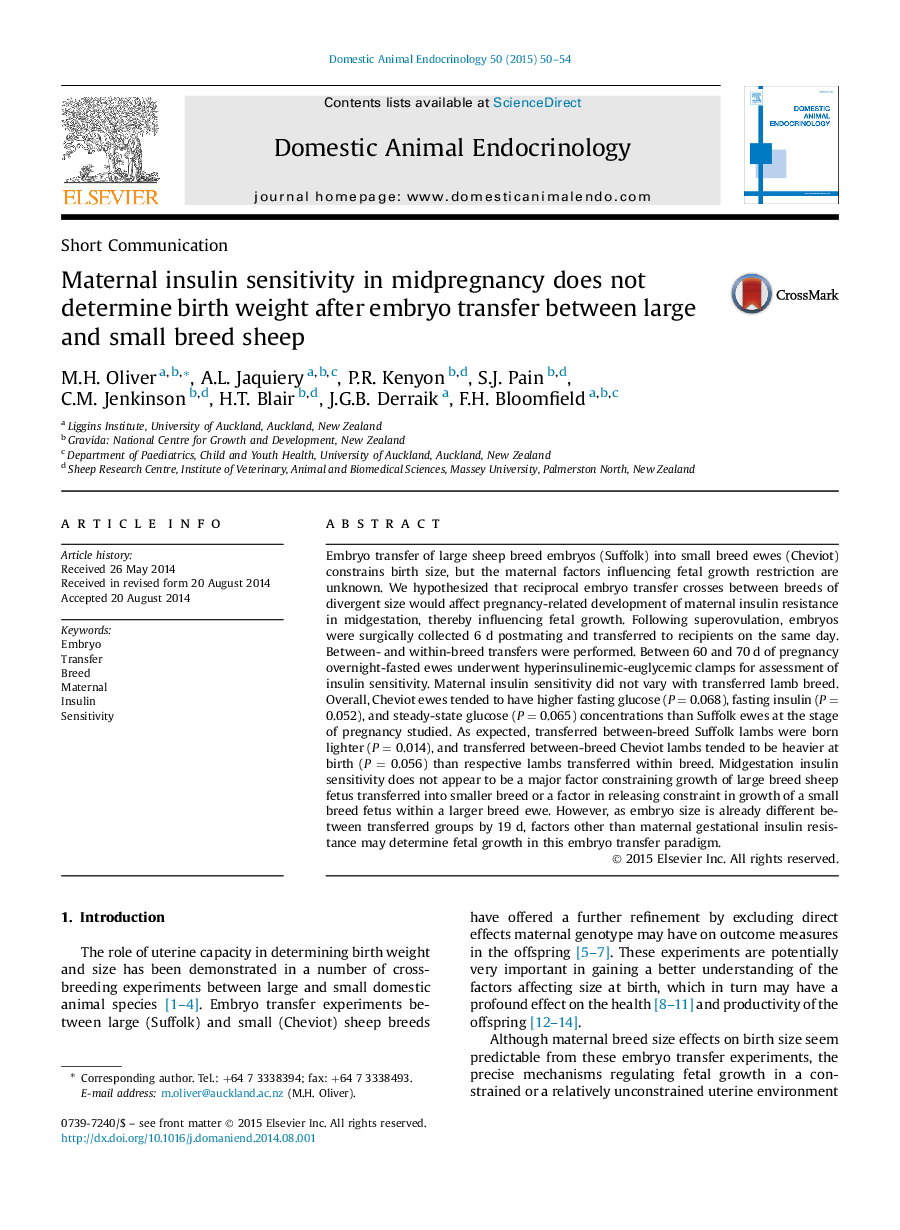| Article ID | Journal | Published Year | Pages | File Type |
|---|---|---|---|---|
| 2393477 | Domestic Animal Endocrinology | 2015 | 5 Pages |
Embryo transfer of large sheep breed embryos (Suffolk) into small breed ewes (Cheviot) constrains birth size, but the maternal factors influencing fetal growth restriction are unknown. We hypothesized that reciprocal embryo transfer crosses between breeds of divergent size would affect pregnancy-related development of maternal insulin resistance in midgestation, thereby influencing fetal growth. Following superovulation, embryos were surgically collected 6 d postmating and transferred to recipients on the same day. Between- and within-breed transfers were performed. Between 60 and 70 d of pregnancy overnight-fasted ewes underwent hyperinsulinemic-euglycemic clamps for assessment of insulin sensitivity. Maternal insulin sensitivity did not vary with transferred lamb breed. Overall, Cheviot ewes tended to have higher fasting glucose (P = 0.068), fasting insulin (P = 0.052), and steady-state glucose (P = 0.065) concentrations than Suffolk ewes at the stage of pregnancy studied. As expected, transferred between-breed Suffolk lambs were born lighter (P = 0.014), and transferred between-breed Cheviot lambs tended to be heavier at birth (P = 0.056) than respective lambs transferred within breed. Midgestation insulin sensitivity does not appear to be a major factor constraining growth of large breed sheep fetus transferred into smaller breed or a factor in releasing constraint in growth of a small breed fetus within a larger breed ewe. However, as embryo size is already different between transferred groups by 19 d, factors other than maternal gestational insulin resistance may determine fetal growth in this embryo transfer paradigm.
